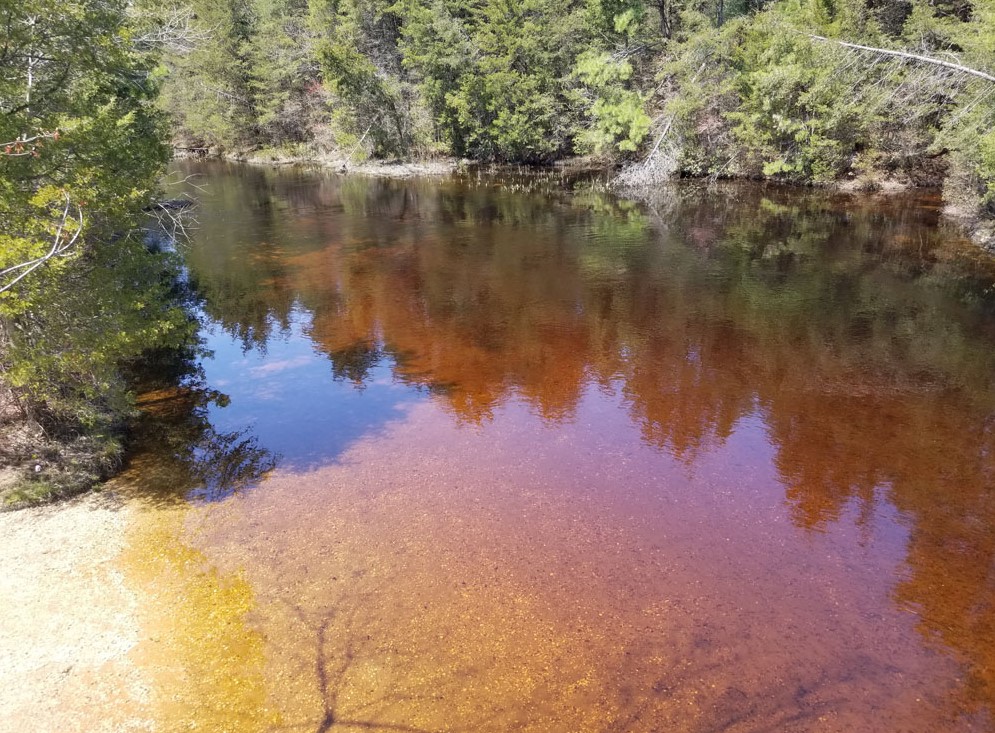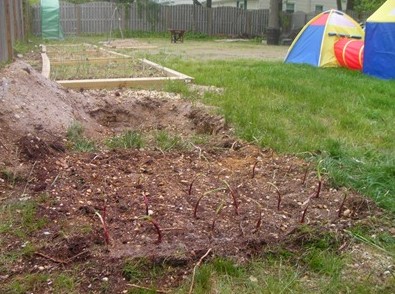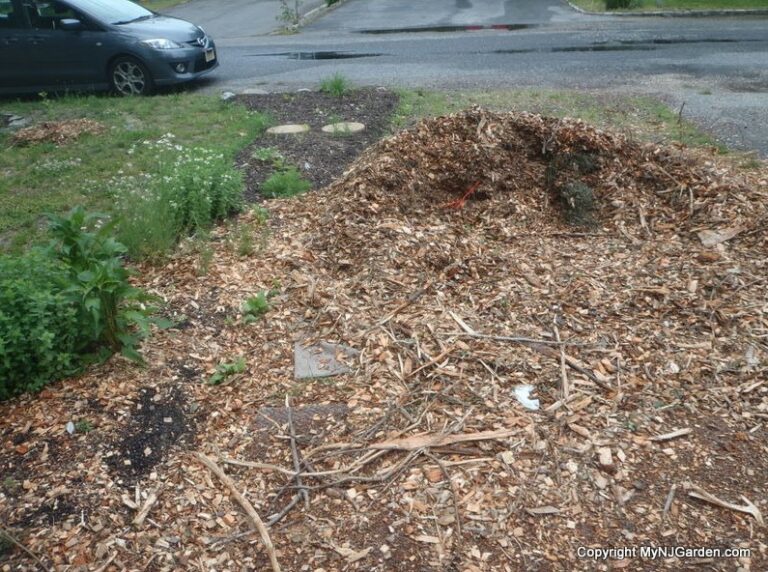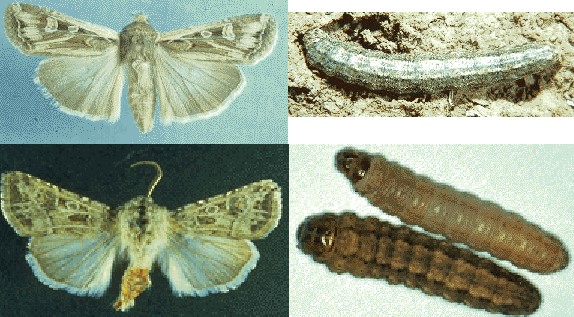
We met with our tour guide, Andrew when we arrived at Double Trouble state park. He’s a local historian and he talked to us about the park property and the legacy of cranberry cultivation in Ocean County, NJ.
In 1903 the Crabb family owned it and the Double Trouble company built and managed a sawmill. They dammed up cedar creek to create the energy needed process the timber. The company transitioned into cranberry cultivation, but continued to use the sawmill equipment to make the crates and boxes to ship the harvests. The sawmill experienced a terrible fire in August of 1904. When Mr. Crabb rebuilt later that year, he used sheet metal siding to protect the mill from future fires. The siding is still on the building today!
NJ bought the property in the 1960s to protect Cedar Creek, the third largest river in the pine barrens and arguably the cleanest river in the state. 68 million gallons of water flow from Cedar Creek to the Barnegat Bay each day. These civil war era cranberry bogs are irrigated by gravity from the reservoir.
Though our guide, Andrew Anderson, claimed to be more of a historian than a plant enthusiast, we discussed some of the species we saw in the park.
He showed us both red cedar and Atlantic eastern white cedar trees standing side by side for a perfect comparison. We discussed the differences between the two. White cedars aren’t really cedars, they are cypress, but we call them cedar. White cedars like wet lowlands and red cedars like dryer highland areas. White cedar are wind pollinated, where red cedars seeds are spread by animals. If you see cedar trees planted in a row under power lines, this is why.
Sweet pepper bush grows along the trail. Though not blooming yet, he promised that the blooms are very fragrant and native Americans would mix the flowers with water to form a lather and use it as soap.

As the group crossed the white bridge, he told us that we were stepping over the Lacey/Bayville border. It also defined the end and beginning of the old 201 and 609 area codes.
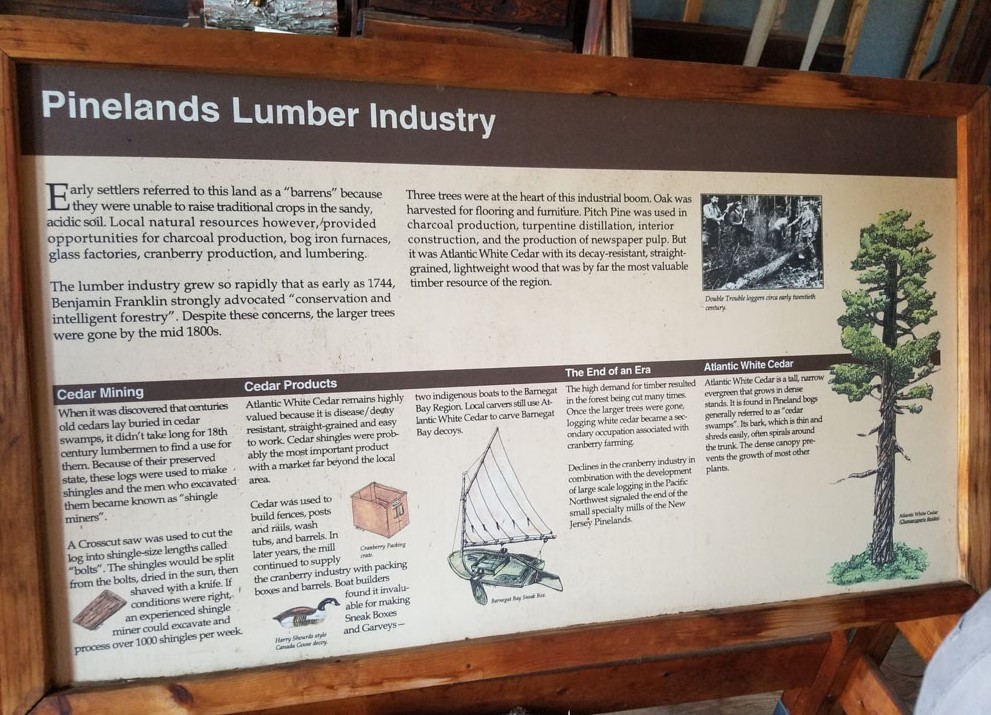
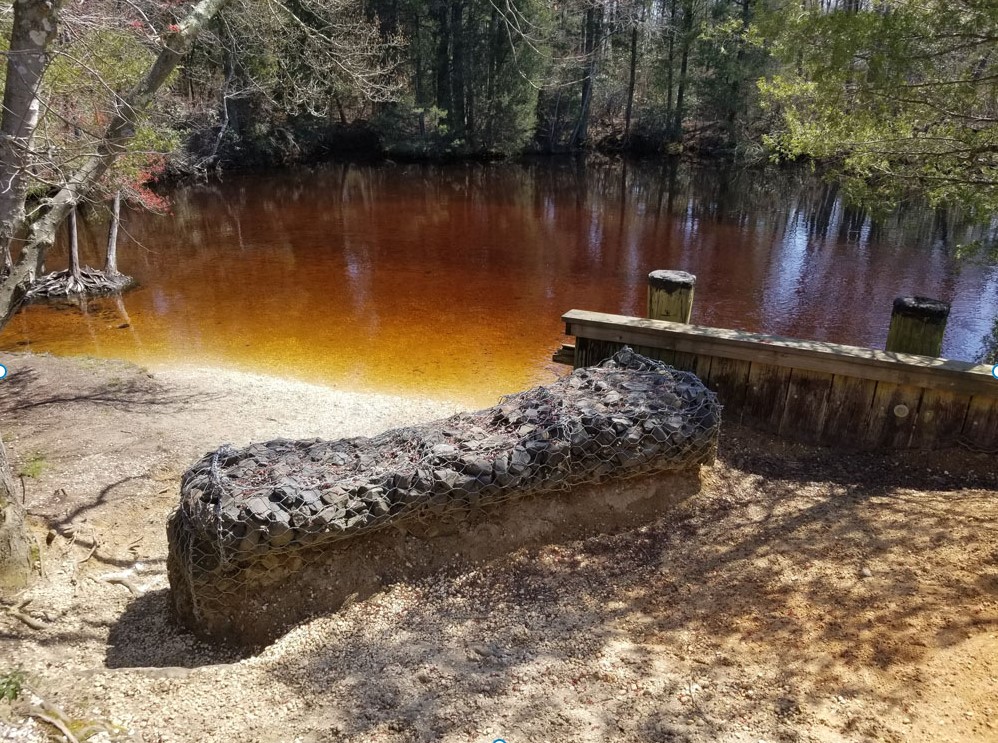
A favorite fact Andrew claims to bring up at parties is when you see a lot of large rocks, wrapped in wire, on the side of a creek or water way, this is called a Gabrian’s Basket. These are put in place to control erosion and as settlement of soil and debris occur between the rocks, they will eventually become natural looking formations which will become homes for wildlife and native plants.
Weird NJ published a story about an alien landing in the Double Trouble State Park. The urban legend began because of the appearance of strangely perfect circles of fallen trees, seemingly without explanation. The real reason for the phenomena was something called “straightline wind” which rarely happens in storms.
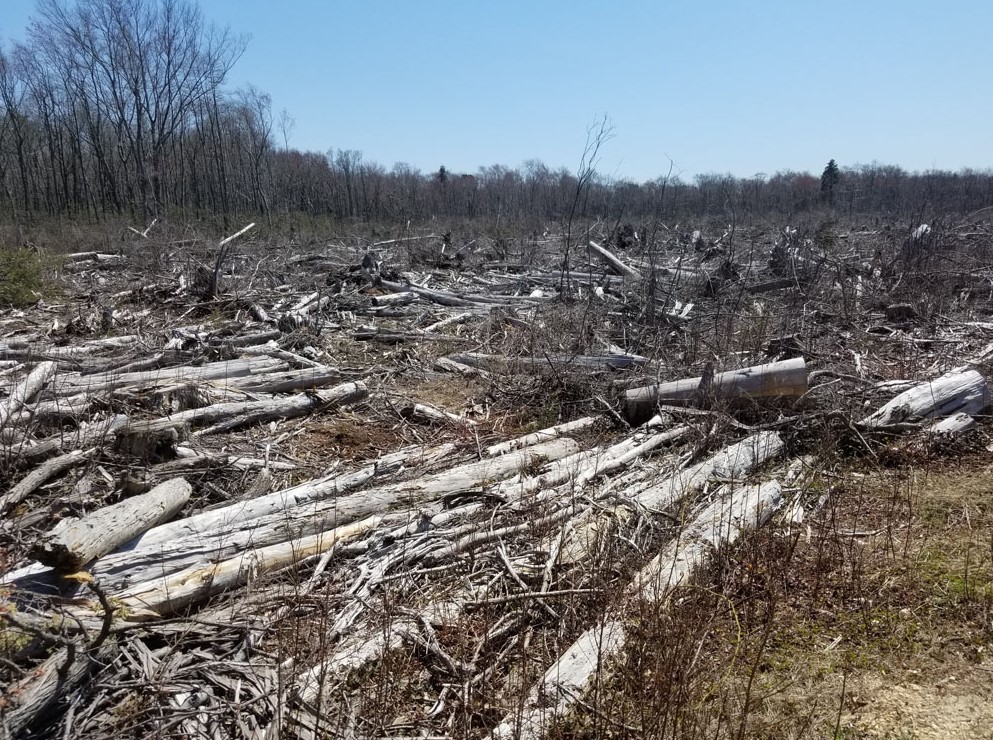
There are 3 cranberry bogs on the property. The Goudy bog and two Hooper bogs. The Littmans were the last family to harvest here and 17 people got the job done in just a few days. The varieties that grow here are Howes and Early Blacks, though Rutgers has developed newer, hybrid varieties including one called Scarlet Knight, that produce more than double the amount of berries as these heirloom varieties each growing season.
Early Blacks: Discovered by N. Robbins in 1852 in Harwich, Massachusetts, they are the first berries to market in September. Growers like them because they can be harvested before the fall frost season. The berries are smaller and yield less than new hybrids but have a sweeter taste and intense red color.
Howes: Discovered by E. Howes in 1843 in East Dennis, Massachusetts, Howes are harvested about three weeks after the Early Blacks. Howes produce bigger, firmer, tart berries and they store well. Howes can be sliced and still hold their berry shape.
